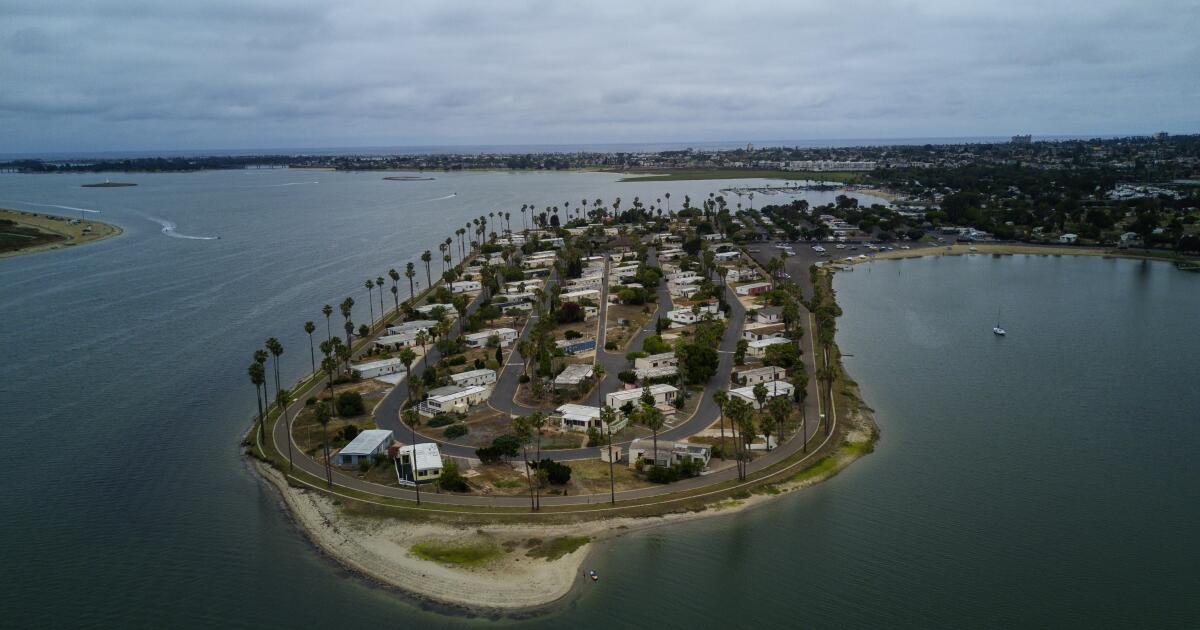

Heatherington is a volunteer for the Environmental Center of San Diego and is on the Board of Directors of The Chaparral Lands Conservancy. He is retired and lives in Rancho Bernardo.
De Anza Cove is in the northeast corner of Mission Bay. If you are not familiar, you may have seen it, driving by on the freeway. It’s a beautiful place, with green grass, a few trees and the calm lagoon beyond. But this placid lagoon has been at the center of controversy for a long time.
It was controversial in the late 1940s, when the city dredged up a beautiful salt marsh to create leasable land and make money for city coffers. And it was controversial in the 1950s when the original trailer park turned into permanent housing. The State Lands Commission, which granted the tidelands to the city, intervened in the early 1960s and declared it an illegal use. The situation, however, was complicated by the 50-year lease the city had signed and by legislation passed in the interim that protected the rights of trailer park residents. In 1982, state legislation, known as the Kapiloff bill, AB 447, allowed the residents to stay until the lease ran out in 2003.
All this time, De Anza Point has been closed to the public. But the Public Trust Doctrine, enshrined in our state Constitution and given teeth by the California Coastal Act, gives you and me the right of convenient access to the water. But the abuse of the public trust has continued. Just two years ago, the California Coastal Commission fined the operator of Campland and De Anza RV Resort (same operator) somewhere around $1 million in fines and penalties for blocking public access on De Anza Point and on the other side of Rose Creek, and so, after three-quarters of a century, some public access has been restored. But don’t rejoice yet; the city has another plan.
This plan is in the form of an amendment to the Mission Bay Park Master Plan. I encourage you to go to sd.gov and look at the map. Right in the middle, illustrated in pink, is an area labeled Low Cost Visitor Serving Accommodations (58.5 acres). The city says this means a mix of RVs and tent camping. Yet those facilities are in place now and according to an analysis by the California Coastal Commission are priced at two to three times the cost of similar sites at San Elijo and Silver Strand State Beaches. This is hardly low cost.
Now look at the beaches, in yellow (5.5 acres). They can only be accessed through commercial businesses. In other words, this plan will recreate the very same conditions that have blocked public access for over 70 years. We can do better than this. This plan, De Anza Natural, is flawed because it is based on strategies and policies straight out of the 1940s. We can create a more equitable future, but first we must right the wrongs of the past.
It should be noted that roughly half of the salt marsh restoration in this plan is west of Rose Creek. This area was set aside for restoration in the 1994 Mission Bay Park Master Plan. It could have been restored years ago, with no changes to the master plan. It should also be noted that this is the most vital part of the salt marsh restoration effort in Mission Bay because it will reconnect the Kendall-Frost Marsh with Rose Creek. This connection, the confluence of creek and bay, is the lifeblood of a salt marsh and that is why this part of the bay was set aside for restoration in 1994.
If you believe, as I do, that we can make our park more beautiful, that we can make it function as a natural system and that we can provide a shoreline that is open and accessible to everyone, please contact your City Council representative and ask them to reject De Anza Natural, because if this plan is realized, the injustice and the controversy will continue for years to come.






